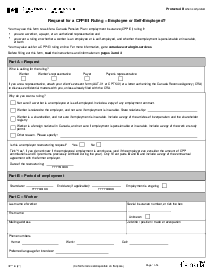-
Templates
1099 FormsAccurately report 1099 information returns and ensure IRS filing with easeExplore all templatesW-9 W-8 FormsEasily manage and share taxpayer details to streamline payments and meet IRS requirements with confidenceExplore all templatesOther Tax FormsFillable tax forms simplify and speed up your tax filing process and aid with recordkeeping.Explore all templatesReal EstateReal estate templates for all cases, from sale to rentals, save you a lot of time and effort.Explore all templatesLogisticsSimplify your trucking and logistics paperwork with our ready-to-use transportation and freight templates.Explore all templatesMedicalMedical forms help you keep patient documentation organized and secure.Explore all templatesBill of SaleBill of Sale templates streamline the transfer of ownership with clarity and protection.Explore all templatesContractsVarious contract templates ensure efficient and clear legal transactions.Explore all templatesEducationEducational forms and templates enhance the learning experience and student management.Explore all templates
-
Features
FeaturesAI-Enhanced Document Solutions for Contractor-Client Success and IRS ComplianceExplore all featuresAI Summarizer Check out the featureAI PDF summarizer makes your document workflow even faster. Ask AI to summarize PDF, assist you with tax forms, complete assignments, and more using just one tool.Sign PDF Check out the featurePDFLiner gives the opportunity to sign documents online, save them, send at once by email or print. Register now, upload your document and e-sign it onlineFill Out PDF Check out the featurePDFLiner provides different tools for filling in PDF forms. All you need is to register, upload the necessary document and start filling it out.Draw on a PDF Check out the featureDraw lines, circles, and other drawings on PDF using tools of PDFLiner online. Streamline your document editing process, speeding up your productivity
- Solutions
- Features
- Blog
- Support
- Pricing
- Log in
- Sign Up
Form T4PS
Get your Form T4PS in 3 easy steps
-
01 Fill and edit template
-
02 Sign it online
-
03 Export or print immediately
What It Is and Why It Matters
In the realm of employment and tax regulations in Canada, the Form T4PS holds significant importance for both employers and employees alike. This document serves as a crucial reporting tool that details any distributions or allocations made from an Employee Profit-Sharing Plan (EPSP) to an employee.
Understanding what the Form T4PS is and why it matters is essential for both parties to ensure compliance with the Canada Revenue Agency (CRA) guidelines and accurate reporting of income. For employers, the completion and submission of Form T4PS are not optional but mandatory if distributions or allocations have been made from an EPSP to their employees during the tax year.
The form provides detailed information on these payments, including any amounts contributed by the employer on behalf of the employee. Accuracy in reporting on Form T4PS is vital to avoid penalties or audits by the CRA, as any discrepancies may raise red flags during tax assessments.
Therefore, employers must ensure that they download the correct Form T4PS template from the CRA website and fill it out accurately before sending it to their employees. Employees receiving distributions or allocations from an EPSP should pay close attention to any Form T4PS they receive from their employer.
This form outlines important details regarding their share of profits or bonuses received through the plan, which must be reported when filing their annual Tax Return. Understanding what information is presented on Form T4PS can help employees accurately report their income and avoid potential discrepancies that could trigger audits or delays in processing their tax returns.
Employers, Employees, and the CRA
- Employers play a critical role in administering Employee Profit-Sharing Plans (EPSPs) and ensuring compliance with reporting requirements to the Canada Revenue Agency (CRA). From setting up the EPSP to making allocations or payments, employers must navigate complex regulations to accurately report information on Form T4PS. Employers are responsible for providing employees with timely and accurate information regarding their share of profits through the EPSP.
- This transparency fosters trust between employer and employee and helps ensure that both parties understand their obligations under the plan. Employees, on the other hand, rely on their employers to communicate effectively about how EPSPs impact their tax situation.
- Understanding the implications of EPSP allocations or payments reported on Form T4PS is crucial for employees when filing their Tax Return. By receiving clear and comprehensive information from their employers, employees can make informed decisions about their finances and plan accordingly for any tax implications resulting from participating in an EPSP.
- Communication between employers and employees is key to fostering a mutually beneficial relationship that supports compliance with CRA regulations. The Canada Revenue Agency (CRA) serves as the governing body overseeing EPSP reporting requirements outlined in Form T4PS.
- Employers must adhere to CRA guidelines when preparing and submitting this form annually. The CRA uses the information provided on Form T4PS to verify income reported by employees on their individual tax returns.
- It is essential for both employers and employees to understand the role of the CRA in monitoring EPSPs, as non-compliance can result in penalties or audits. By maintaining accurate records and complying with CRA regulations, employers demonstrate integrity in managing EPSPs while ensuring that employees fulfill their tax obligations effectively.
Types of EPSPs Reported on T4PS
- When it comes to the Employee Profit-Sharing Plan (EPSP) and reporting it on Form T4PS, there are several important considerations to keep in mind. EPSPs are a type of employee benefit plan where employers share a portion of their profits with employees. This can be a valuable incentive for employees and can align their interests with that of the company.
- EPSPs can take various forms, including cash bonuses, shares in the company, or contributions to a retirement savings plan. Employers need to understand the different types of EPSPs that may be reported on Form T4PS to ensure accurate reporting to the Canada Revenue Agency (CRA).
- One common type is cash bonuses distributed to employees based on company performance. These bonuses are typically calculated as a percentage of an employee's salary and are usually subject to income tax withholding.
- Another type is shares or stock options given to employees as part of their compensation package. These shares may vest over time or be subject to certain performance conditions.
- Another important consideration when reporting EPSPs on Form T4PS is contributions made by employers to retirement savings plans on behalf of employees. These contributions are often tax-deductible for employers and can provide valuable retirement benefits for employees.
- It is important for employers to accurately report these contributions on Form T4PS so that employees can properly report them on their tax returns. Failure to report EPSP earnings accurately can lead to penalties from the CRA, so it is essential for employers to maintain detailed records and seek professional guidance if needed.
- Understanding the types of EPSPs reported on Form T4PS is crucial for both employers and employees. Employers must accurately report these earnings to the CRA, ensuring compliance with tax laws and regulations.
- Employees should also be aware of how EPSP earnings impact their tax liabilities and ensure they include these earnings when filing their tax returns. By maintaining clear records and seeking guidance when necessary, employers and employees can navigate the complexities of EPSP reporting effectively.
Allocations vs. Payments: Understanding What's Reported
When it comes to Form T4PS, understanding the distinctions between allocations and payments is crucial for both employers and employees. Allocations on a T4PS refer to the amount of money that has been set aside for distribution among employees within an Employee Profit-Sharing Plan (EPSP).
These allocations are typically determined based on predetermined formulas or agreements within the EPSP. On the other hand, payments reported on a T4PS represent the actual funds disbursed to employees from the EPSP during the tax year.
For employers, accurately reporting allocations and payments on Form T4PS is essential for compliance with Canada Revenue Agency (CRA) regulations. Any discrepancies in reporting could lead to potential penalties or audits by the CRA.
Employers must ensure that they correctly differentiate between allocations and payments when completing Form T4PS to provide accurate information to both their employees and the CRA. Employees, on the other hand, should pay close attention to their T4PS forms to verify that the allocations and payments reported align with their understanding of their earnings from an EPSP.
It is vital for employees to review these forms carefully before filing their tax return as any inaccuracies could impact their tax bill. By understanding what is being reported in terms of allocations versus payments on Form T4PS, both employers and employees can ensure compliance with CRA guidelines and avoid potential issues during tax season.
How EPSP Affects Your Tax Bill
Employers and employees involved in Employee Profit-Sharing Plans (EPSPs) must understand how these plans can impact their tax bills. EPSPs are a popular way for employers to share profits with their employees, providing them with additional compensation based on the company's performance.
However, the amount received through an EPSP is considered taxable income and must be reported correctly on both the employer's and employee's tax returns to ensure compliance with the Canada Revenue Agency (CRA). From the employer's perspective, contributions made to an EPSP are tax-deductible, which can help lower the overall corporate tax bill.
Employers must accurately report these contributions on Form T4PS when filing taxes. Failing to report EPSP contributions correctly can lead to penalties or fines from the CRA.
On the other hand, employees who receive payments from an EPSP need to understand that this income is subject to taxation just like regular employment income. It's essential for employees to report these earnings accurately on their personal tax returns to avoid any issues with the CRA.
When it comes to filing taxes, both employers and employees should pay close attention to how EPSPs affect their overall tax situation. For employers, understanding the implications of contributing to an EPSP can help them optimize their tax planning strategies and ensure compliance with CRA regulations.
Employees who receive payments from an EPSP must be diligent in reporting this income accurately on their tax returns to avoid any discrepancies or audits by the CRA. By staying informed and following proper procedures when it comes to EPSPs and taxation, both employers and employees can navigate this aspect of financial management successfully while minimizing any potential risks or complications.
Conclusion
In the realm of employment and taxation in Canada, the symbiotic relationship between Employers and Employees is intricately woven with the guidance of the Canada Revenue Agency (CRA). The significance of accurately completing and submitting Form T4PS cannot be overstated.
Employers hold a pivotal role in ensuring that their employees' earnings through EPSPs are appropriately reported to the CRA. Similarly, Employees must be vigilant in understanding how these allocations impact their tax obligations.
This collaborative effort not only fosters compliance but also cultivates trust and transparency within the workforce. As we delve deeper into the nuances of EPSPs, it becomes evident that distinguishing between allocations and payments is crucial for both Employers and Employees alike.
The meticulous reporting of these details on Form T4PS serves as a cornerstone for accurate tax assessments. By comprehending these distinctions, Employers can uphold their fiscal responsibilities while offering valuable incentives to their workforce.
Simultaneously, Employees can navigate their tax returns with confidence, knowing that their EPSP earnings are correctly documented. While navigating the complexities of EPSPs and Form T4PS may seem daunting at first glance, it is essential to view this process as an opportunity for growth and compliance.
Fillable online Form T4PS


































































